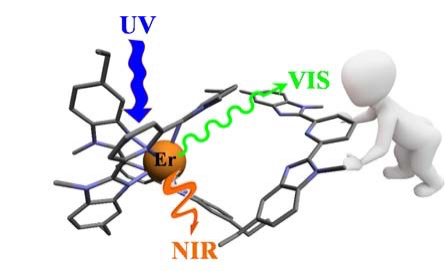Publications
-
Thermodynamic Programming of Erbium(III) Coordination Complexes for Dual Visible-Near Infrared Luminescence
Bahman Golesorkhi, Laure Guénée, Homayoun Nozary, Alexandre Fürstenberg, Yan Suffren, Svetlana V. Eliseeva, Stéphane Petoud, Andreas Hauser, and Claude Piguet
Chem. Eur. J. 2018, 24(50), 13158-13169
 |
Intrigued by the unexpected room‐temperature dual visible/near‐infrared (NIR) luminescence observed for fast‐relaxing erbium complexes embedded in triple‐stranded helicates, in this contribution, we explore a series of six tridentate N‐donor receptors L4–L9 with variable aromaticities and alkyl substituents to extricate the stereoelectronic features responsible for such scarce optical signatures. Detailed solid‐state (X‐ray diffraction, differential scanning calorimetry, optical spectroscopy) and solution (speciations and thermodynamic stabilities, spectrophotometry, NMR and optical spectroscopy) studies of mononuclear unsaturated [Er(Lk)2]3+ and saturated triple‐helical [Er(Lk)3]3+ model complexes reveal that the stereoelectronic changes induced by the organic ligands affect inter‐ and intramolecular interactions to such an extent that 1) melting temperatures in solids, 2) the affinity for trivalent erbium in solution, and 3) optical properties in luminescent complexes can be rationally varied and controlled. With this toolkit in hand, mononuclear erbium complexes with low stabilities displaying only NIR emission can be transformed into molecular‐based dual Er‐centered visible/NIR emitters operating at room temperature in both solid and solution states.
Archive ouverte / Open archive: unige:108196
